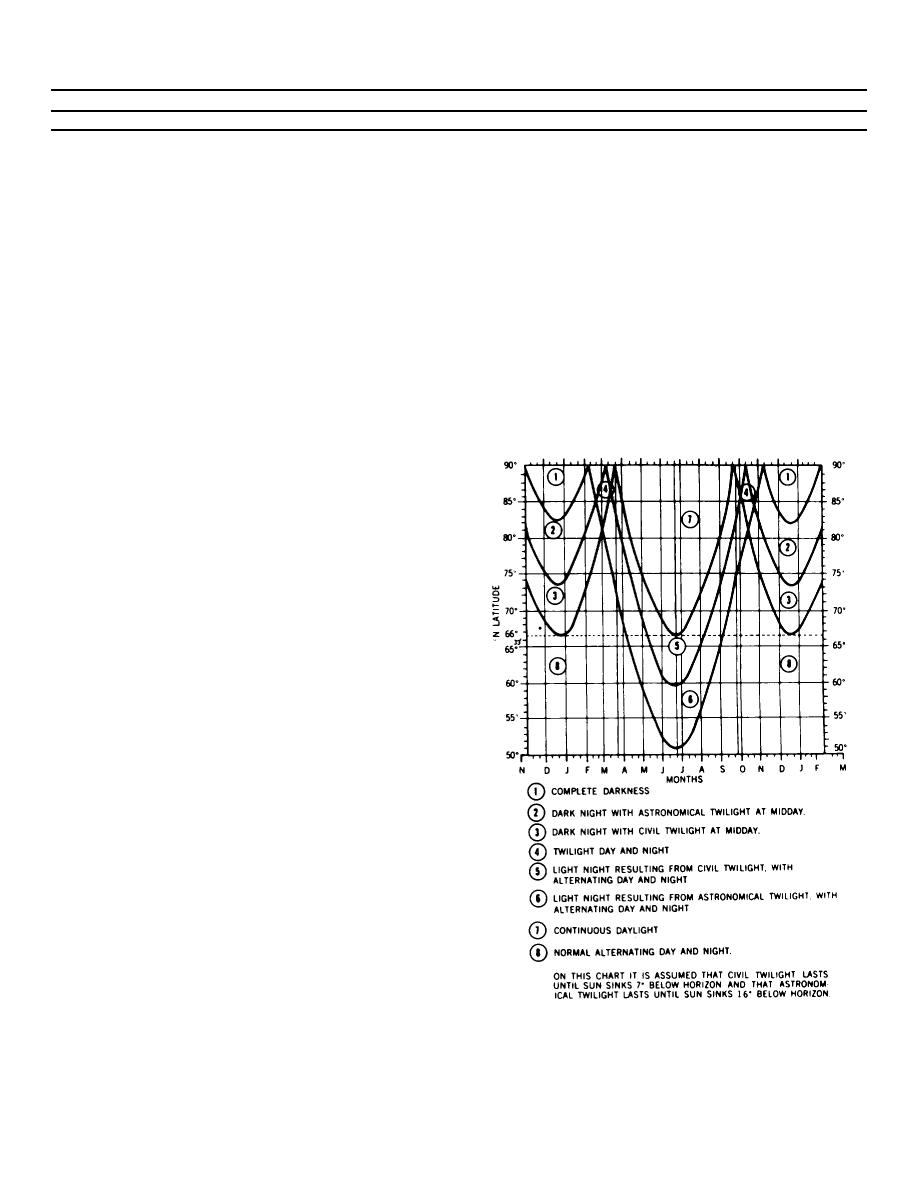
TM 5-852-1/AFR 88-19, Volume 1
Table 2-2. Stages of relative human comfort and the environmental effects of atmospheric cooling.
Wind-chill factor
2
2
Btu/ft hr
Kg cal/m hr
Relative comfort
220
600
Conditions considered as comfortable when people are dressed in
wool underwear, socks, mitts, ski boots, ski headband and thin
cotton windbreaker suits, and while skiing over snow at about 3
2
mph(metabolic output about 200 kg cal/m hr).
370
1000
Pleasant conditions for travel cease on foggy ant overcast days.
440
1200
Pleasant conditions for travel cease on clear sunlit (lays.
520
1400
Freezing of human flesh begins, depending upon the degree of
activity, the amount of solar radiation, and the character of the skin
and circulation. Average maximum limit of cooling during
November, December and January. At temperatures above ,5 F
these conditions are accompanied by winds approaching blizzard
force.
590
1600
Travel and life in temporary shelter very disagreeable.
700
1900
Conditions reached in the darkness of mid-winter. Exposed areas
of face freeze in leas than a minute for the average individual.
Travel dangerous.
850
2300
Exposed areas of the face freeze less than 1/2 minute for the
average individual.
2-6.
Visibility and natural illumination
Care should be taken in siting projects to take into
account the possibility of local adverse weather
conditions. Visibility problems may arise, for example,
from local fogs that form over nearby bodies of water.
Ice fog and blowing snow can cause severe reductions in
visibility in the winter months, compounded by the
shortage of natural illumination at that time. A "white-
out," a condition where there is a lack of contrast
between the sky and the snow surface, can hinder
visibility considerably. Long hours of daylight and twilight
provide maximum illumination for field activities during
spring and summer, but in fall and winter the sun is very
low or below the horizon. Figure 2-11 shows that at the
North Pole the number of days in the year with
continuous daylight is double the number with continuous
darkness. Thus, the annual light conditions in these
regions are not as poor as they are sometimes pictured
to be. The consistently low elevation of the sun above
the horizon when it is shining reduces its energy
effectiveness but does help in judging surface conditions
from the air because of the shadows cast by knolls,
ridges and vegetation. During dark periods, the light of
the full moon may be of help for some activities. The
number of hours of daylight or of daylight plus twilight
can be estimated from figure 2-12 or 2-13.
2-7.
Vegetation
The three major types of vegetative cover in arctic and
subarctic areas are tundra, muskeg and forest. Each of
these represents a natural selection of species and the
adaptation of vegetation to environmental factors such
Figure 2-11. Solar illumination in the Arctic.
as soil and air temperatures, soil type,. drainage, depth
of active layer over permafrost, etc. Vegetation can be
of particular value in arctic and subarctic areas as an aid,
in
conjunction
with
other
information
2-16



 Previous Page
Previous Page
